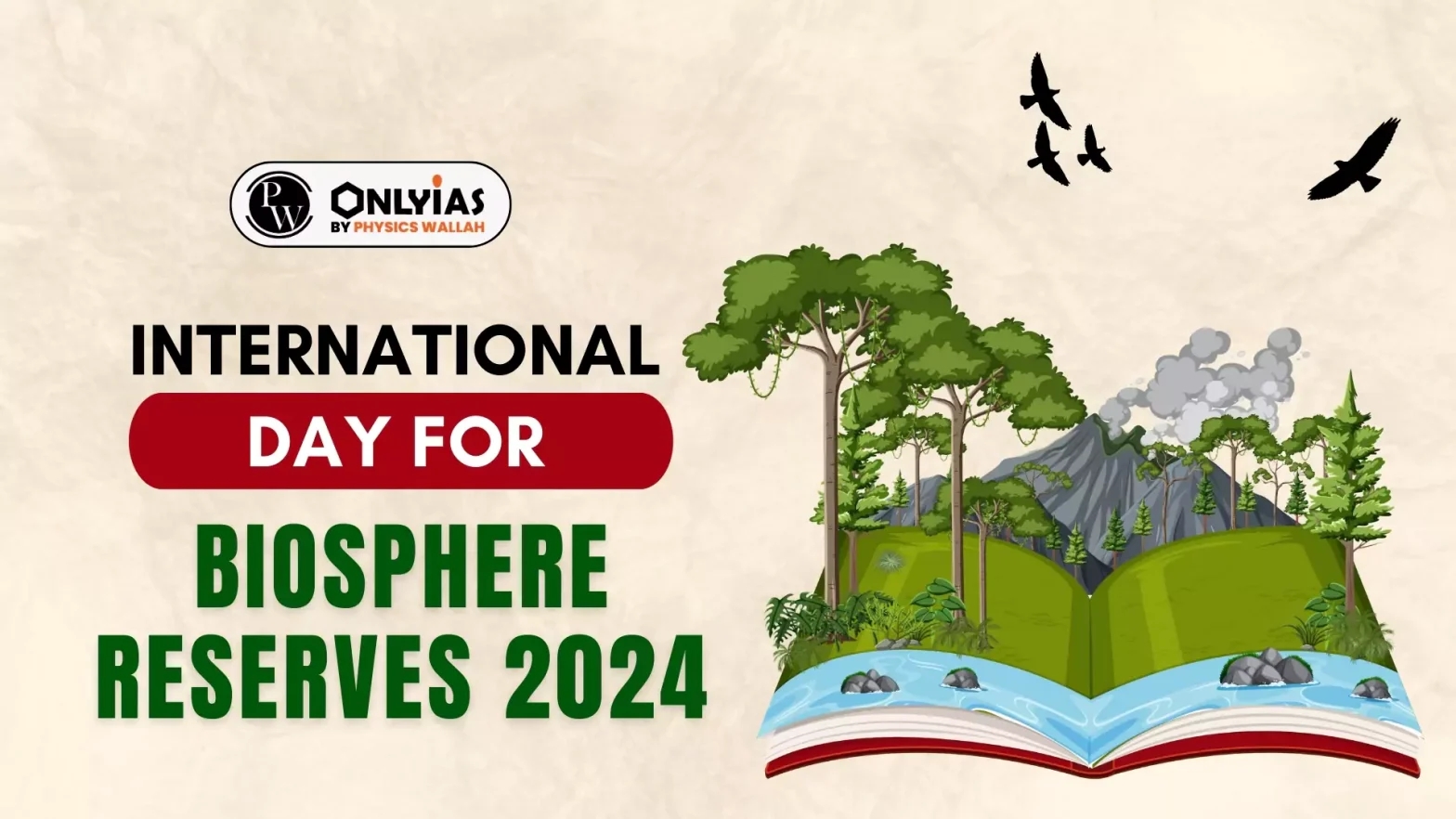International Day for Biosphere Reserves 2024 celebrates the role of biosphere reserves in conserving biodiversity and promoting sustainable development. Theme: "BE PART OF THE PLAN."

The International Day for Biosphere Reserves 2024 was celebrated to raise awareness about the importance of biosphere reserves in preserving ecosystems and promoting sustainable development. This day highlights the role of UNESCO Biosphere Reserves, which are areas designated for the protection of biodiversity and fostering sustainable economic development. It serves as a platform to emphasize the critical balance between human activity and nature.
An International Biosphere Reserve is a designated area that combines efforts for environmental conservation with sustainable development. These areas are recognized under UNESCO’s Man and the Biosphere (MAB) Programme and are internationally recognized for promoting biodiversity and natural habitats while fostering research, education, and sustainable livelihoods for local communities.

The International Day for Biosphere Reserves 2024 theme is “BE PART OF THE PLAN.” It focuses on halting and reversing biodiversity loss by implementing the Kunming-Montreal Global Biodiversity Framework (also called the Biodiversity Plan). This theme encourages cooperation and partnerships among governments, local communities, NGOs, businesses, and individuals to support the plan’s goals. The celebration coincides with key meetings of the Convention on Biological Diversity in Nairobi, aimed at promoting scientific and policy-driven actions for biodiversity conservation.
A Biosphere Reserve is a protected area that aims to balance biodiversity conservation with sustainable use of natural resources. These reserves are divided into core areas (for conservation), buffer zones (for research and education), and transition areas (where sustainable human activities occur). They play a crucial role in understanding and managing changes in ecosystems, and their conservation efforts are essential for maintaining ecological integrity.
India is home to 18 biosphere reserves recognized for their rich biodiversity and cultural heritage. These reserves are located in various regions, ranging from forests to coastal areas, contributing significantly to both ecological conservation and sustainable development. Some of the notable biosphere reserves in India include:
| List of Biosphere Reserves in India | |
| Biosphere Reserve | Location |
| Cold Desert | Himachal Pradesh |
| Nanda Devi | Uttarakhand |
| Khangchendzonga | Sikkim |
| Dehang-Debang | Arunachal Pradesh |
| Manas | Assam |
| Dibru-Saikhowa | Assam |
| Nokrek | Meghalaya |
| Panna | Madhya Pradesh |
| Pachmarhi | Madhya Pradesh |
| Achanakmar-Amarkantak | Madhya Pradesh-Chhattisgarh |
| Kachchh | Gujarat |
| Similipal | Odisha |
| Sundarban | West Bengal |
| Seshachalam | Andhra Pradesh |
| Agasthyamala | Karnataka-Tamil Nadu-Kerala |
| Nilgiri | Tamil Nadu-Kerala |
| Gulf of Mannar | Tamil Nadu |
| Great Nicobar | Andaman & Nicobar Islands |
If you are preparing for UPSC 2025, then don’t delay anymore in preparing with the best guidance and top-notch resources. Join PW UPSC Online Batches today.
As of 2024, there are 18 biosphere reserves in India. These areas are crucial for conserving ecosystems, species, and genetic diversity while promoting sustainable practices among local communities.
The Nilgiri Biosphere Reserve, designated in 1986, was the first biosphere reserve in India. It is part of the Western Ghats and is known for its rich biodiversity and cultural significance.
The Yellowstone National Park in the United States, established in 1872, is considered the first biosphere reserve in the world. It was designated by UNESCO as part of its Man and the Biosphere (MAB) Programme, which later led to the development of biosphere reserves globally.
The International Day for Biosphere Reserves is celebrated to promote the role of biosphere reserves in biodiversity conservation and sustainable development, emphasizing the balance between nature and human activity.
The theme for 2024 is "Sustainable Living through Preserving Biodiversity," focusing on biodiversity protection and sustainable resource use.
A biosphere reserve helps conserve ecosystems and species while promoting sustainable economic activities in harmony with nature.
Yellowstone National Park in the USA, designated in 1872, is considered the first biosphere reserve under UNESCO’s Man and the Biosphere Programme.

<div class="new-fform">
</div>